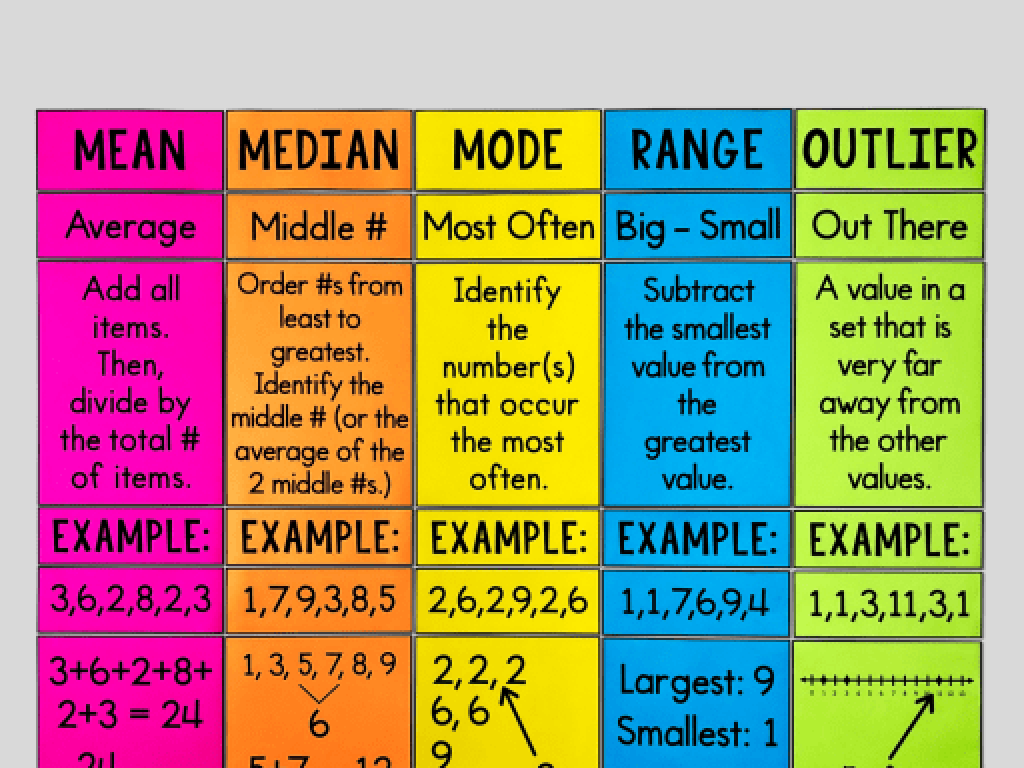Factors Affecting Climate: Latitude
Subject: Science
Grade: Sixth grade
Topic: Weather And Climate
Please LOG IN to download the presentation. Access is available to registered users only.
View More Content
Latitude’s Impact on Climate
– Earth’s climate complexity
– Weather vs. Climate
– Weather is day-to-day, climate is long-term patterns
– Latitude’s role in climate
– Distance from equator changes sun’s intensity
– Equator: Warmer climates
– Near equator, sun’s rays are more direct, leading to higher temperatures
|
This slide introduces the concept of how latitude affects climate, a key component in understanding Earth’s diverse weather patterns. Begin by discussing the complexity of Earth’s climate and the factors that influence it. Clarify the difference between weather (short-term atmospheric conditions) and climate (average weather over a long period). Emphasize that latitude, or the distance from the equator, significantly affects the amount of solar energy an area receives, which in turn influences its climate. Areas near the equator receive more direct sunlight year-round, resulting in warmer climates. This foundational knowledge sets the stage for exploring other factors that affect climate in subsequent lessons.
Understanding Latitude and Climate
– Latitude defined
– Latitude: a measure of distance north or south of the Equator
– Imaginary lines on Earth
– Lines like the Equator divide Earth into hemispheres
– Latitude examples: Equator, Tropics, Poles
– Equator at 0°, Tropics at 23.5°, Poles at 90°
– Latitude’s role in climate
– Closer to Equator: warmer climate, towards Poles: colder
|
Latitude is a key concept in understanding Earth’s climate. It refers to the location of a place on Earth’s surface in relation to the Equator, which is an imaginary line that circles the globe. The further away from the Equator, the more extreme the temperatures can be, with the poles experiencing the coldest climates. This slide will introduce students to the concept of latitude and how these imaginary lines help us pinpoint locations on Earth. Examples like the Equator, Tropics of Cancer and Capricorn, and the Arctic and Antarctic Circles illustrate how latitude affects climate. Encourage students to think about how the climate varies in different parts of the world and how latitude plays a role in these differences.
Latitude and Sunlight
– Latitude’s effect on sunlight angle
– The angle of sunlight changes with latitude, affecting climate.
– Direct vs. Indirect Sunlight
– Direct sunlight is warm, hitting equator directly. Indirect is cooler, hitting poles at an angle.
– Activity: Sunlight Angles with Flashlights
– Use flashlights to simulate the sun’s rays at different latitudes.
|
This slide introduces the concept of how latitude affects the angle at which sunlight hits the Earth, which in turn affects climate. Students will learn the difference between direct sunlight, which occurs around the equator and results in warmer temperatures, and indirect sunlight, which occurs at higher latitudes near the poles and results in cooler temperatures. The activity involves using flashlights to demonstrate how the angle of sunlight changes with latitude. Teachers should prepare flashlights and globes or balls to simulate the Earth. Students can work in groups, shining flashlights at different angles to represent different latitudes. Discuss how the concentration and spread of light changes with the angle, relating this to temperature differences on Earth.
Climate Zones and Latitude
– Earth’s three main climate zones
– Tropical, Temperate, Polar based on latitude
– Characteristics of each zone
– Tropical: warm, rainy; Temperate: moderate; Polar: cold, dry
– Examples of places in each zone
– Tropical: Amazon; Temperate: London; Polar: Antarctica
– Latitude’s role in climate
|
This slide introduces students to the concept of climate zones, which are categorized based on their latitude. The tropical zone is near the equator and is known for its warmth and rainfall. The temperate zone lies between the polar and tropical zones, characterized by moderate temperatures. The polar zone is near the poles and is cold and dry. Provide examples of each zone, such as the Amazon Rainforest for the tropical zone, London for the temperate zone, and Antarctica for the polar zone. Emphasize how latitude affects the amount of sunlight an area receives, influencing its climate. Encourage students to think about how the climate in these zones affects the life and activities of the people living there.
Latitude’s Impact on Daily Life
– Latitude’s role in culture
– Cultures near the equator have different customs, clothing, and diets than those near the poles.
– Influence on agriculture
– Crops vary with latitude; tropical areas grow bananas, while apples thrive in temperate zones.
– Latitude affects resources
– Natural resources like solar energy are abundant in equatorial regions compared to polar areas.
– Personal impact discussion
|
This slide aims to explore the concept of latitude and its profound impact on various aspects of daily life, including culture, agriculture, and the availability of natural resources. Students should understand that latitude influences climate, which in turn affects the type of crops that can be grown, the kind of clothes worn, and the lifestyle led by people in different regions. The discussion point encourages students to think about how latitude might affect their own lives, prompting them to consider their local climate, food, and culture. This will help personalize the concept of latitude, making it more relatable and easier to grasp.
Class Activity: Latitude and Climate
– Group Activity: Climate Zone Poster
– Include Climate Characteristics
– Temperature, precipitation, seasons
– Add Wildlife and Human Activities
– Animals and plants in the region, farming, fishing, tourism
– Present Your Poster to the Class
|
This class activity is designed to help students understand the relationship between latitude and climate. Students will work in groups to create a poster that depicts the characteristics of a specific climate zone, including the typical weather patterns, native wildlife, and common human activities. Encourage creativity and research. Provide materials for the poster creation. Once completed, each group will present their poster to the class, explaining their findings and the impact of latitude on their chosen climate zone. This activity will foster teamwork and presentation skills while reinforcing the lesson’s content.
Conclusion: Latitude’s Impact on Climate
– Recap: Latitude’s role in climate
– Latitude determines the climate by the amount of sunlight an area receives.
– Understanding climate significance
– Knowing about climate helps us prepare for weather conditions and understand Earth’s ecosystems.
– Homework: Essay on ideal climate zone
– Write about the climate you’d love to live in and explain your reasons.
– Discussing climate preferences
– Think about what weather you enjoy and how it affects your daily life.
|
In this concluding slide, we review the concept that latitude affects climate by influencing the intensity and duration of sunlight an area receives. Understanding climate is crucial for predicting weather patterns, preparing for environmental changes, and appreciating the diversity of ecosystems. For homework, students will write an essay describing their ideal climate zone and the reasons behind their preference. This exercise encourages them to apply what they’ve learned and to reflect on how climate affects human choices and lifestyles. Encourage creativity and personal reflection in their essays.






